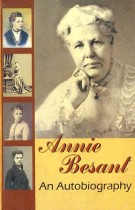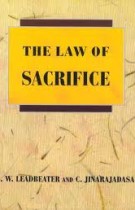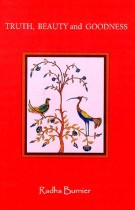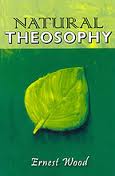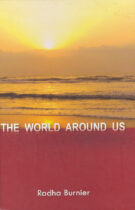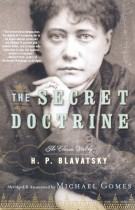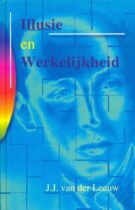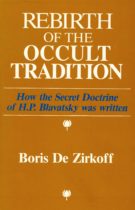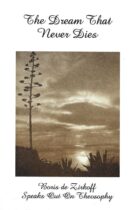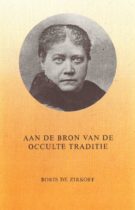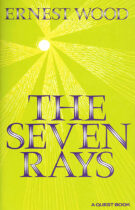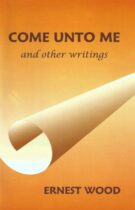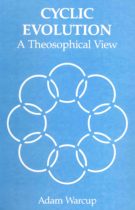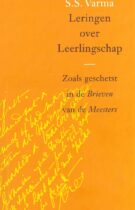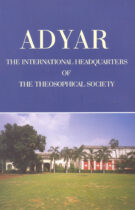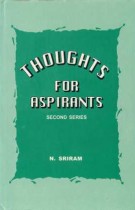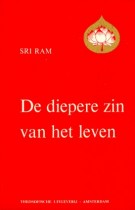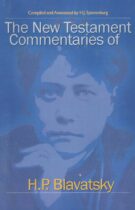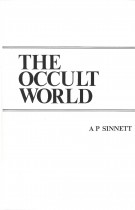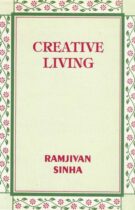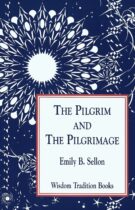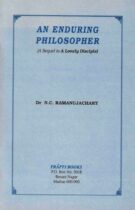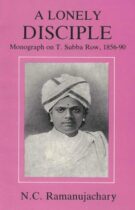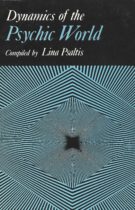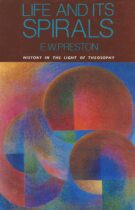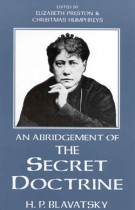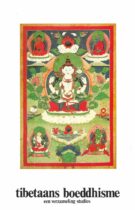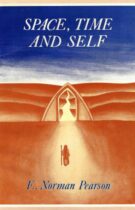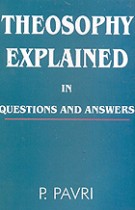De esoterische traditie
754 blz. | Gebonden/Hardcover | Theosophical University Press, 2001
De basisgedachten in De Geheime Leer van Blavatsky omvatten de beginselen van een wijsheid die veel ouder is dan de Veda’s van India, de oudste geschriften ter wereld. Deze wijsheid wordt hier door de schrijver uiteengezet. De grote vooruitgang in het wetenschappelijke en religieuze denken over de mens en het heelal sinds de tijd van Blavatsky vormen de achtergrond voor de toelichting in dit boek. Symboliek en mystiek, de mysteriën van de innerlijke samenstelling van de mens, esoterische scholen, grote zieners en wijzen, de relatie tussen wetenschap en esoterie komen aan bod. Tevens wordt uitgebreid besproken hoe het reïncarnatieproces in zijn werk gaat.
An Autobiography
322 pages | Gebonden/Hardcover | Theosophical Publishing House, 2008
This book, first published in 1893, contains a candid description of the first forty-two years of Annie Besant’s life: a relatively happy childhood, an unfortunate marriage, followed by domestic, social, religious and political trials and tribulations. It reveals her remarkable courage and a strong sense of social justice.
This autobiography is a shining example of the unlimited potential of one who is convinced of his or her goal.
Annie Besant (1847-1933) led the fight for the rights of women and laborers in her native England; later she worked with Mahatma Gandhi and spearheaded India’s struggle for freedom. Theosophist Joy Mills describes her as “a feminist before the movement for women’s rights was fully launched; she stood for freedom when half the world was held in the bonds of colonialism.” A student of India’s spiritual traditions, Annie Besant was famed as an orator, author, and international President of the Theosophical Society.
The Law of Sacrifice
68 pages | Paperback | Theosophical Publishing House, 2000
C.W. Leadbeater and C. Jinarajadasa
Sacrifice is selfless giving, the way to freedom from the bondage of karma. “All nature must give forth or die”. The Eternal Principle gives of itself in manifestation this is the great Cosmic Sacrifice, which C. Jinarajadasa explains with quotations from ancient texts and living examples.
C.W. Leadbeater points out that sacrifice is “Love in the fullest and deepest sense of the word”. By giving ourselves in loving service, in unselfish devotion and renunciation for the good of others, we can transmute ourselves. Love is the way to life and immortality.
C. W. Leadbeater was a highly developed clairvoyant and the author of over thirty books on the spiritual life and on the psychic nature of man. He unfolded and perfected his own psychic faculties under the guidance of his Adept teacher and in 1893 began his clairvoyant investigations, on occasion collaborating with Annie Besant, the second President of the Theosophical Society. His worldwide lectures presented a new viewpoint to thousands of people. Other titles by the author C. W. Leadbeater: – The Chakras – Christian Gnosis – The Inner Life – Man, Visible and Invisible
Truth, Beauty, and Goodness
81 pages | Paperback | Theosophical Publishing House, 2002
Truth, Beauty, and Goodness are interrelated. While beauty is the garment of truth, goodness is beauty revealed in action. Many philosophers and poets have spoken about the identity of these three aspects of reality, how each one leads to the other. Discovery of truth or beauty is the natural aspiration of every right thinking individual. Clarity and undisturbed serenity are essential requirements for perceiving truth. These qualifications cannot be acquired in the absence of pure and righteous living.
An Adyar book, imported from India.
Radha Burnier became 7th international President of the Theosophical Society in 1980, following the lead of her father, N. Sri Ram, who was the 5th President, and close associate of Annie Besant. Mrs. Burnier had previously served in many capacities, including Director of the research and publications of the Adyar Library and Research Centre from 1959-1979. She holds a Master’s degree in Sanskrit from the Benares Hindu University, and an honorary Doctor of Literature degree from Nagarjuna University. She has lectured all over the world on Theosophical and cultural topics, and both her talks and writings are known for their clarity of thought and depth of vision.
The Esoteric World of Madame Blavatsky – Insights into the Life of a Modern Sphinx
By Daniel H. Caldwell.
451 Pages | First Quest Edition 2000 | Hardcover | Quest Books U.S.A. | ISBN: 0835607941.
‘A psychological enigma, a puzzle for future generations, a Sphinx!’
So reads the self-portrait of Helena P. Blavatsky (1831 – 1891), the leading esoteric author of the nineteenth century. Others called her ‘the lady with the magical eyes’. A world traveler and student of religions, Madame Blavatsky was among the first to bring Eastern Wisdom to the West. Her writing affected W.B. Yeats, James Joyce, D.H. Lawrence, L. Frank Baum (The Wizard of Oz), Wassily Kandinsky, Piet Mondrian, Gustav Mahler, Jean Sibelius, Alexander Scriabin, and many others.
These first-hand accounts lead us into the fascinating world of Madame Blavatsky’s soirées, sites of the astounding phenomena that made her a cause célèbre. Famous as magnets for freethinking intellectuals, these gatherings were a forum for her unconventional ideas that anticipated the spiritual and ecological movements of today. But the depth of this enigmatic Sphinx – as related here by family, friends, and even enemies – transcends the fads of time.
From Chapter 1 – ‘Russia 1831 – 1849’ (p. 1):
” Helena was an exceptional child, who at an early age was aware of being different from those around her. Her possession of certain psychic powers puzzled her family and friends. At once impatient of all authority, yet deeply sensitive, she was gifted in many ways. A clever linguist, a talented pianist, and a fine artist, she was yet a fearless rider of half-broken horses, and always in close touch with nature. At a very early age she sensed that she was in some way dedicated to a life of service and was aware of a special guidance and protection. “
This volume recites firsthand accounts of the teachings and enigmas of the Theosophical Sphinx. Through it, the reader enters the fascinating world of Madame Blavatsky’s soirees — famous as magnets for freethinking intellectuals and the sites of remarkable and remarked-upon phenomena, as related here by family, friends, and enemies. Includes over 35 black and white photos from the Theosophical archives. Daniel Caldwell, Master of Library Science, is one of the world’s leading authorities on H. P. Blavatsky’s life and works.
Natural Theosophy
158 pages | Gebonden/Hardcover | Theosophical Publishing House, 2008
This book shows us that Theosophy in its pristine form is very ancient and indicates the opposite of every kind of materialism, both scientific and religious. Theosophy or the Divine Wisdom belongs to the everyday world, nutured by our altruistic desires. Thought, Love or will applied to our daily experience reveals its divine value, leading us to find the infinite in the finite.
The Eastern concept of “satyam”, “sivam” and “sundaram” (truth, goodness and beauty) are fittingly interwoven into the triad of thought, will, and action.
This book will help the reader understanding more clearly the true nature of Theosophy.
Ernest Wood, scholar, writer, and lecturer, was born in 1883 in England and was attracted to Theosophy at a young age. He arrived in India early in the twentieth century, and assisted Annie Besant in educational work. He was the founder of the Theosophical College, Madanapalle. He wrote many books on philosophical subjects, having a particular interest in Yoga. After World War II, he came to the United States, where he was for several years Dean of the American Academy of Asian Studies in San Francisco and later joined the staff of the University of Houston, Texas. Other titles by the author: – Come Unto Me: And Other Writings – Concentration – Concentration: An Approach to Meditation – The Occult Training of the Hindus – The Seven Rays
Reminiscences of H. P. Blavatsky and The Secret Doctrine
141 pages | Paperback | Quest Books, 1989
A day-to-day account of life with H. P. Blavatsky during the writing of The Secret Doctrine.
The World Around Us – ‘On The Watch-Tower’ Articles from 1980 – 2007
By Radha S. Burnier (1923 – 2013).
620 Pages | First edition 2009 | Hardcover | Theosophical Publishing House Adyar | ISBN: 9788170595212.
Mrs. Radha Burnier served five terms as the President of the Theosophical Society, having taken office as the seventh President in 1980. The World Around Us is a compilation of Burnier’s ‘On The Watch-Tower’ notes, which appeared as her editorial articles in The President’s official monthly Journal The Theosophist between the years 1980 and 2007. The validity and teachings of these articles continue to be appreciated by many members of the Theosophical Society around the world.
Mrs. Burnier’s careful observation and deep perception of the modern world and of human nature in general, sensitively guides the reader to a better understanding of the Theosophic life. The compilation provides a rich source of handy reference material and comments of Wisdom on a wide range of subjects – social, geographical, environmental, and spiritual, among others – that rouse the reader to a better awareness and involvement in the world around us.
From Chapter 1 – ‘Theosophy and the Theosophical Society’ (p. 10):
” No Wisdom from above descends on anyone save on leaving every atom of selfishness or desire for personal ends. Nature gives her innermost secrets and imparts true Wisdom only to him or her, who seeks truth for its own sake and craves for knowledge in order to confer benefits on others, not on his or her own unimportant personality. “
Radha Burnier became 7th international President of the Theosophical Society in 1980, following the lead of her father, N. Sri Ram, who was the 5th President, and close associate of Annie Besant. Mrs. Burnier had previously served in many capacities, including Director of the research and publications of the Adyar Library and Research Centre from 1959-1979. She holds a Master’s degree in Sanskrit from the Benares Hindu University, and an honorary Doctor of Literature degree from Nagarjuna University. She has lectured all over the world on Theosophical and cultural topics, and both her talks and writings are known for their clarity of thought and depth of vision.
Filosofische implicaties van grensoverschrijdende ervaringen
28 blz. | Brochure | Universiteit van Leiden, 2005
Rede uitgesproken door prof.dr. J.L.F. Gerding, bij het aanvaarden van het ambt van bijzonder hoogleraar metafysica in de geest van de theosofie aan de Universiteit van Leiden op 4 februari 2005.
The Secret Doctrine – Abridged and Annotated by Michael Gomes
By Helena Petrovna Blavatsky (1831 – 1891), abridged and annotated by Michael Gomes.
257 Pages | Published in 2009 | Softcover | Tarcher/ Penguin Books | ISBN: 9781585427086.
The Secret Doctrine, Helena Petrovna Blavatsky’s masterwork on the origin and evolution of the universe and humanity itself, is arguably the most famous, and perhaps the most influential, occult book ever written. Published since 1888 only in expensive, two-volume editions of some 1400 pages, it has long eluded the grasp of modern readers- until now.
This single-volume edition, abridged and annotated by historian and Theosophical scholar Michael Gomes, places the ideas of The Secret Doctrine within reach of all who are curious. In particular, Gomes provides a critical sounding of the book’s famous stanzas on the genesis of life and the cosmos – mysterious passages that Blavatsky said originated from a primeval source and which form the heart of The Secret Doctrine. Gomes scrupulously scales down the book’s key writings on symbolism to their essentials, and offers notes and a glossary to illuminate arcane references. His historical and literary introduction casts new light on some of the book’s sources and on the career of its brilliant and elusive author, one of the most intriguing personages of the nineteenth century. At once compact and representative of the work as a whole, this new edition of The Secret Doctrine brings unprecedented accessibility to the key esoteric classic of the modern era.
Eminent Theosophists (CD-Rom)
CD Rom | T.P.H. Adyar, India, 2006
Helena Petrovna Blavatsky (1831–91) was perhaps the greatest Occultist of the West in recent times, and an outstanding messenger who presented the Ancient Wisdom for the modern age. With little fanfare she brought to bear powerful influences on human affairs, as is exemplified in her life and works. She did not bring anything new to mankind; in fact she succeeded in the great task of communicating wisdom that is as ancient as mankind.
Annie Besant (1847–1933), second President of The Theosophical Society from 1907 to 1933, was described as a ‘Diamond Soul’, for she had many brilliant facets to her character. She was an outstanding orator of her time, a champion of human freedom, educationist, philanthropist, and author with more than three hundred books and pamphlets to her credit.
Henry Steel Olcott (1832–1907), President-Founder of the Theosophical Society was born on 2 August 1832 at Orange, New Jersey. Olcott came from an old English Puritan family that had been settled for many generations in the United States.
C. Jinarājadāsa (1875–1953), the fourth President of the Theosophical Society, was educated at Cambridge University, England, and was an exceptional linguist, who lectured fluently in many European languages. His wide range of interests and writings included religion, philosophy, literature, art, science and occult chemistry. He made valuable sketches and notes during the clairvoyant investigations of Annie Besant and C. W. Leadbeater into the structure of matter.
Charles Webster Leadbeater (1847–1934) was a highly developed clairvoyant who unfolded and perfected his psychic faculties under the guidance of his Adept-Teacher. He commenced clairvoyant investigations in 1893, on occasion collaborating with Annie Besant, the second President of The Theosophical Society, and wrote over thirty books on the spiritual life and the psychic nature of man.
N. Sri Ram (1889–1973), fifth President of The Theosophical Society from 1953 to 1973, dedicated himself to Theosophical work as a young assistant of Dr Besant. He was closely associated with her social, political and educational and other activities, and helped her in editing New India, a daily newspaper that was influential in the struggle for India’s freedom.
Krishnamurti over Krishnamurti – ‘Krishnamurti’s Notebook’
Door Jiddu Krishnamurti (1895 – 1986).
288 Pagina’s | Eerste druk 2004 | Synthese, een imprint van Milinda Uitgevers B.V. | ISBN: 9789062719792.
‘ Krishnamurti’s Notebook is a spiritual treasure. The words inside offer the intimate spirit of a truly remarkable presence, poetic, gracious, vast as the sky and wonderfully wise.’ – Jack Kornfield (auteur).
‘ This Notebook, with its matter-of-fact descriptions of Krishnamurti’s almost daily experiences of mystical states, was a privilege to read. In the past, I have found Krishnamurti’s ideas hard to grasp, no doubt because I was trying to grasp them. But this Notebook seems sometimes to paralyze my thought and allow Krishnamurti to work on me on a deeper level. ‘ – John Cleese (auteur).
Toen in 1976 de 1e druk verscheen van Krishnamurti’s Notebook (in 1981 vertaald met als Nederlandse titel “Aantekeningen”) was direct al duidelijk dat dit een uniek spiritueel document was waarin Krishnamurti zijn waarnemingen, ervaringen en bewustzijnstoestanden beschrijft. Het bleek geen gewoon dagboek, omdat het nauwelijks ingaat op de dagelijkse dingen in het leven van alledag maar veel meer aantekeningen bevat over zijn persoonlijke spirituele ontwikkeling en de grote betrokkenheid met het leven op aarde. Krishnamurti beschrijft zijn bijna dagelijkse maar altijd onverwachte spirituele gemoedstoestanden die – zoals hij aangeeft – gepaard gingen met fysieke pijnen en die van grote betekenis bleken te zijn voor zijn wijze levenslessen. Bij de eerste druk werd er vanuit gegaan dat deze met de hand geschreven teksten compleet waren. In 2000 werden 32 nieuwe handgeschreven aantekeningen gevonden die volledig aansloten bij de eerdere teksten en het beeld van de innerlijke beroeringen van Krishnamurti compleet maakten.
Illusie en Werkelijkheid
Door Dr. Jacobus Johannes van der Leeuw (1893 – 1934).
237 Pagina’s | Uitgegeven in 2011 | Hardcover | Uitgeverij der Theosofische Vereniging in Nederland | ISBN: 9789061758006.
Engels origineel: The Conquest of Illusion | Uitgegeven in 1928, herdruk door Kessinger Publications 2010 | LL.D., Alfred A. Knopf, New York and London | ISBN: 9781161388084.
In Illusie en Werkelijkheid houdt J.J. van der Leeuw een onvermoeibaar pleidooi voor de filosofie van de ervaring. Deze filosofie gaat niet uit van een theoretisch model van de werkelijkheid, maar van het subjectieve principe ‘dit heb ik gezien, dus weet ik.’ De grote drijfveer achter de filosofie van de ervaring behoort, naast oprechte verwondering, een verlangen te zijn om de wezenlijke aard van onze wereld te leren kennen. Dit verlangen naar waarheid is een heilige aspiratie.
Van der Leeuw beschrijft in 11 hoofdstukken de illusies, waarmee de mens te maken heeft in zijn kijk op en worsteling met de wereld, op zoek naar waarheid. Het is duidelijk, dat de wereld, die hij waarneemt niet de wereld is, maar zijn wereld, door hemzelf geschapen. De werkelijke wereld kan pas worden gekend als de mens al zijn illusies en denkbeelden heeft overwonnen. In menig opzicht sluit Van der Leeuws benaderingswijze aan op de visie, zoals uitgedragen door Jiddu Krishnamurti (1895 – 1986), met wie de auteur van dit boek bevriend was. Van der Leeuw gaat in op de dualiteit van geest en materie, het mysterie van het begin van de schepping, het kwaad in de wereld, de vrijheid van de wil en de onsterfelijkheid van de ziel. Verder bespreekt hij het onderscheid tussen intuïtie en intellect, en geeft hij een analyse van de werelden van verschil tussen het relatieve en het Absolute.
Afkomstig uit Hoofdstuk 11 – ‘In het Licht van het Eeuwige’ (blz. 232):
” De beschilderde sluier, door hen die er waren, leven genoemd,
Die een nabootsing was, als met kleuren lukraak besmeerd,
Waarin alle mensen geloofden en waarop zij hun hoop hadden gevestigd, wordt opzij getrokken;
Het weerzinwekkende masker is gevallen, de mens blijft,
Zonder scepter, vrij, onbegrensd, maar aan een ieder
Gelijk, zonder klasse, zonder stam, en zonder natie,
Ontheven van ontzag, aanbidding en graad, koning(in)
Over zichzelf; rechtvaardig, zachtmoedig en wijs: maar
Zonder hartstocht? Nee, niettemin vrij van schuld of pijn
Die voor zijn wil waren gemaakt of waaronder hij heeft geleden,
Nochtans niet vrij, hoewel over hen regerend als waren zij slaven,
Van toeval, en de dood, en wisselvalligheid, niet vrij van
De belemmeringen van datgene wat zich anders boven
De hoogste ster van een onbeklommen hemel zou kunnen verheffen,
Als het duistere toppunt in de intense leegt.
‘De mens blijft’, en in hem wordt het geheim van de Werkelijkheid gevonden . . . “
- Percy Bysshe Shelley (1792 – 1822).
Van der Leeuw beschrijft in 11 hoofdstukken de illusies waarmee de mens te maken heeft in zijn kijk op en in zijn worsteling met de wereld, op zoek naar waarheid. Het is duidelijk dat de wereld die hij waarneemt niet de wereld is, maar zijn wereld, door hemzelf geschapen. De werkelijke wereld kan pas worden gekend als de mens al zijn illusies en denkbeelden heeft overwonnen. In menig opzicht sluit Van der Leeuws benaderingswijze aan op de visie zoals uitgedragen door Jiddu Krishnamurti, met wie de auteur van dit boek bevriend was. Van der Leeuw gaat in op de dualiteit van geest en materie, het mysterie van het begin van de schepping, het kwaad in de wereld, de vrijheid van de wil en de onsterfelijkheid van de ziel. Verder bespreekt hij het onderscheid tussen intuïtie en intellect, en geeft hij een analyse van de wereld van verschil tussen het relatieve en het Absolute.
Rebirth of the Occult Tradition – How the Secret Doctrine of H.P. Blavatsky was written
By Boris M. de Zirkoff (1902–1981).
78 Pages | First edition 1977, reprint 1990 | Softcover | Theosophical Publishing House, Adyar | ISBN: 0835675351.
Dutch translation: Aan de Bron van de Occulte Traditie – Uitgeverij der Theosofische Vereniging in Nederland | ISBN 9061750490.
This publication represents an historical introduction to the Two-Volume 1978 Edition of The Secret Doctrine. The epoch-making work known as The Secret Doctrine is the magnum opus of Helena Petrovna Blavatsky (1831 – 1891). Its subtitle is: ‘The Synthesis of Science, Religion and Philosophy’.
The First Volume of The Secret Doctrine came off the Press on 20 October 1888. This fact is recorded by Richard Harte, then in London, and about to leave for India. In a set of the original edition (first printing), now in the archives of the present writer, there is, on the half-title page, a note in blue pencil signed by Richard Harte, which says:
” This is the first copy ever issued. I got it from Printer by special Messenger on the morning of the 20 Oct. ’88 as I was leaving the house 17 Lansdowne Road, with Col. Olcott for India (Col. went personally via Naples), The Second Vol. followed me to India. “ – R.H.
The Dream that never Dies – Boris de Zirkoff Speaks Out On Theosophy
By Boris de Zirkoff (1902–1981), compiled and edited by W. Emmett Small.
232 Pages | 1983 | Paperback | Point Loma Publications, California | ISBN: 0913004456.
The fifty selections in this compilation are from the independent Theosophical journal Theosophia, edited by Boris de Zirkoff from its inception in May, 1944, until his death on March 4, 1981, published and edited by Dara Eklund, one of de Zirkoff’s devoted assistants in his later years. It contains farewell words from friends around the world, three photographs of Boris in different periods of his life, and a picture of the Subba Row Medal presented to him on February 23, 1981, by Radha Burnier, President of the Theosophical Society (Adyar) in grateful recognition of his ”untiring efforts, during several decades, to make available to the world the wealth of knowledge contained in H.P.B.’s writings. ”
As the last driving relative of H.P. Blavatsky, Boris de Zirkoff held a unique place in the hearts of all Theosophists, and to them it has always seemed peculiarly appropriate that he should, in the karmis course of events, become the compiler-editor of Blavatsky Collected Writings.
Aan de Bron van de Occulte Traditie
By Boris M. de Zirkoff (1902–1981).
100 Pagina’s | Uitgegeven in 1977 | Softcover | Uitgeverij der Theosofische Vereniging in Nederland | ISBN 9061750490.
English original: Rebirth of the Occult Tradition – How the Secret Doctrine of H.P. Blavatsky was written – The Theosophical Publishing House, Adyar | ISBN: 0835675351.
Dit werk is geschreven als historische inleiding op de editie van The Secret Doctrine die werd uitgegeven als onderdeel van de Collected Writings of H.P. Blavatsky.
Helena Petrovna Blavatsky werd op 31 juli 1831 te Ekaterinoslaw in Zuid-Rusland geboren. Al vroeg besefte ze dat ze voorbeschikt was om haar leven te wijden aan de studie en toepassing van het occultisme. In 1851 ontmoette ze voor het eerst haar geestelijke leraar, Meester Morya. Hij sprak met haar over het werk dat haar wachtte, waarna ze zijn leiding aanvaardde zowel bij haar innerlijke ontwikkeling als bij haar openbaar werk.
Na vele omzwervingen, waarbij ze o.a. Tibet bezocht, stichtte ze in New York met Henry Steel Olcott (1832 – 1907), William Quan Judge (1851 – 1896) en negentien anderen The Theosophical Society. Hier schreef ze ook Isis Unveiled. Op verzoek van een aantal goede vrienden vestigde ze zich in 1887 in London, waar ze The Secret Doctrine voltooide. Dit boek zag in 1888 het licht. H.P. Blavatsky stierf in London op 8 mei 1891.
Behalve haar hoofdwerken en talloze tijdschriftartikelen, moeten nog genoemd worden haar Sleutel tot de Theosofie en De Stem van de Stilte. Zoals elders vermeld, verschijnt haar hele oeuvre in H.P. Blavatsky, Collected Writings, verzorgd door Boris de Zirkoff.
Helena Petrovna Blavatsky werd op 31 juli 1831 te Ekaterinoslav in Zuid-Rusland geboren. Al vroeg besefte ze dat ze voorbeschikt was om haar leven te wijden aan de studie en de toepassing van het occultisme. In 1851 ontmoette ze voor het eerst haar geestelijke leraar, Meester Morya. Hij sprak met haar over het werk dat haar wachtte, waarna ze zijn leiding aanvaardde zowel bij haar innerlijke ontwikkeling als bij haar openbaar werk. Na vele omzwervingen, waarbij ze o.a. Tibet bezocht, stichtte ze in New York met H.S. Olcott, W.Q. Judge en negentien anderen The Theosophical Society. Hier schreef ze ook Isis Unveiled. Op verzoek van een aantal goede vrienden vestigde ze zich in 1887 in Londen, waar ze The Secret Doctrine voltooide. Dit boek zag in 1888 het licht. H.P. Blavatsky stierf in Londen op 8 mei 1891. Behalve haar hoofdwerken en talloze tijdschriftartikelen, moeten nog genoemd worden haar Sleutel tot Theosofie en De Stem van de Stilte. Haar hele oevre verscheen in de Collected Writings of H.P. Blavatsky, verzorgd door Boris de Zirkoff. Boris de Zirkoff werd geboren in Rusland. Na de revolutie studeerde hij aan verscheidene universiteiten vooral talen en de klassieken. Nadat hij naar de Verenigde Staten was geëmigreerd en daar genaturaliseerd was, vestigde hij zich op het hoofdkwartier van de Point Loma Theosophical Society bij San Diego, Californië, waar hij achttien jaar werkte voornamelijk op literair gebied. Sinds 1925 verzorgde hij H.P. Blavatsky, Collected Writings, waarvan veertien delen en een index zijn uitgekomen. Verder was hij hoofredacteur van Theosophia, een onafhankelijk driemaandelijks tijdschrift, dat in Los Angeles werd gepubliceerd. Hier heeft hij een theosofisch informatiecentrum gevestigd. In de genoemde serie Collected Writings verscheen in 1972 een herdruk van Isis Unveiled en in 1979 een van The Secret Doctrine. Hiervoor heeft de Zirkoff het merendeel van de honderden citaten en verwijzingen geverifieerd en waar nodig verbeterd, maar Blavatsky’s woorden onaangetast gelaten.
The Seven Rays – Seven Types of Men
By Ernest Wood (1883 – 1965).
190 Pages | Copyright 1925, fourth Quest book printing 1989 | Softcover | Quest Books, U.S.A. | ISBN: 0835604810.
Humanity, occultism teaches us, is divided into seven distinct groups called ‘rays’. Generally speaking, your strongest motivations indicate to which of the ‘ray’ groupings you belong. You are influenced by all seven rays, occultism suggests, but one of the seven predominates. Would you like to know which of the seven rays is yours? ‘With such knowledge‘, writes the author, ‘we are in a position to choose what games we will play in this life or ours.’ For instance if your ray is number one, you are inclined to be independent in spirit and strong intuition. Is this your ray?
From the Preface (p. viii):
” If there are seven rays or types, and each one of us belongs, as it were, especially to one of these, and conducts his pathway in life accordingly, will there not be a tendency to narrowness or over-specialization?
This is a question often asked. The answer is:
Not if we understand the situation. All the seven rays are always present in everybody, but one of them in each person is the captain of the team or the president of the board, and the other six rally round, and use their own specific talents to help carry out his purpose. “
Come Unto Me – And Other Writings
By Ernest Egerton Wood (1883 – 1965).
167 Pages | First edition 2000 | Softcover | Theosophical Publishing House, Adyar | ISBN: 817059426X.
Nearly every page of this book contains ‘gems of truth’ like the below – expressed simply, clearly and with gentle humour:
” I have not yet found the person, who does not teach me what not to do, as well as what to do “ – From Chapter 4: ‘Brotherhood’.
“ The truly great are not the abnormal, the miracle workers, but those whose lives are orderly and harmonious. ” – From Chapter 6: ‘Pleasure, Pain and Happiness’.
” Every finite thing and experience has it infinite pole, so that through a falling leaf or the song of a frog we may march straight into the unlimited and free. ” – From Chapter 10: ‘A Garden by the Water blows’.
” The only way to truth is to pratice truth itself ” – From Chapter 12: ‘The Pathless Land’.
From Chapter 2: ‘ Theosophical Beliefs’ (p. 18 & 19):
” Every human being has his or her own karma. Out of it, he must make beauty, just as the lotus comes out of the mud. Let him use his own thought, his own love, his own will, in those circumstances, which are his karma – no matter what that karma may be – and out of that will come the triumph of life over form. There will be something beautiful there, and in himself will come the intuition of life itself, so that he suddenly knows that he is life, and life is joy and freedom. Let him not make a mistake as though the lotus seed were to say: ‘I do not like this mud; I want golden sands in which to grow’, nor the materialistic mistake of thinking that the triumph of his life over forms means that he should do what are called ‘big’ things, or great things. Quality is the sign of the spirit, not quantity. “
Cyclic Evolution – A Theosophical View
By Adam Warcup.
144 Pages | Published in 1986 | Softcover | The Theosophical Publishing House, London | ISBN: 0722951507.
The current scientific perspective of the evolution of life on Earth is that of a linear progression from simple to complex. The theosophical perspective is radically different. It postulates a cyclic evolution both for Life itself and for individual genera and species, man included. It further postulates a non-physical component as integral to the whole process. Without this added dimension, evolution appears a to be a random process – a perspective wholly denied by Theosophy.
From the Introduction (p.1.):
” Man, Know Thyself, said the Delphic Oracle. Finding ourselves in a complex world, naturally we ask questions about ourselves and our origins. When we first see that this life is but one of many, we have merely answered the first question. This answer certainly gives life a greater meaning, but it also leads to other questions. Where did the process of rebirth start? Will it end, and if so, when? How did we become the complex psycho-spiritual beings we see ourselves to be? The theosophical literature which is concerned with cyclic evolution provides us with many clues, which lead towards, not so much final answers, as an understanding of the process. “
Zeven Sferen – Theosofie als Leidraad voor Psychologie en Levensbeschouwing
Door Frank Visser.
253 Pagina’s | Eerste druk 1995, tweede druk 1998 | Softcover, index & literatuurlijst | Uitgeverij der Theosofische Vereniging in Nederland, Amsterdam | ISBN: 9061750709.
Als er meer is dan de materiele wereld van geboorte, leven en dood, hoe ziet de werkelijkheid er dan hoogstwaarschijnlijk uit? Kunnen we op deze vraag een helder en tegelijkertijd diepgaand antwoord krijgen? In de Theosofische traditie wordt deze vraag bevestigend beantwoord. Vragen over het wezen van de mens, het leven na de dood of het proces van spirituele ontwikkeling worden in deze traditie behandeld op een manier, die de modern mens aanspreekt.
In Zeven Sferen treft de lezer een overzicht aan van het wereldbeeld van de Theosofie, waarbij veel aandacht wordt besteed aan recente ontwikkelingen in de psychologie, met name de transpersoonlijke psychologie. Deze tak van de psychologie probeert een spiritueel mensbeeld te formuleren, dat recht doet aan de diepste ervaringen, die menselijkerwijs mogelijk zijn. De Theosofie beschikt over een begrippenkader dat het moderne onderzoek tot steun kan zijn.
Daarnaast worden in dit boek aspecten van het Theosofische wereldbeeld belicht, die meestal onbesproken blijven. Zo wordt de wereld van de religies op een nieuwe manier in kaart gebracht, worden filosofische vragen, die verband houden met de diepte-dimensie van de werkelijkheid opgeworpen, en komt tenslotte op genuanceerde wijze de waarheidsvraag aan bod.
Uit de Proloog:
” We beschikken inderdaad over oude kaarten van de innerlijke Nieuwe Wereld, die buitengewone pioniers ons hebben nagelaten. En vertrouwen stellen in deze kaarten – al was het maar om te beginnen – is niet een regressief verlangen naar de dagen van weleer . . . maar de enig zinnige handelwijze voor een nieuwe generatie van pioniers, die opnieuw de diepte willen peilen, die door de modern [wetenschap] zo volkomen is genegeerd. We zullen deze kaarten moeten verfijnen, zeker; we zullen veel grenslijnen opnieuw moeten tekenen, ongetwijfeld; maar laten we de hemel danken voor de moed en het succes van hen, die ons voorgingen, een een voetspoor achterlieten, voldoende duidelijk voor al diegenen, die ontvankelijk genoeg zijn om het te volgen. “
– Ken Wilber.
“Precies de heldere analyse die we nodig hebben.”- Ken Wilber Frank Visser is bekend geworden als biograaf van Ken Wilber. In dit boek blijken de theorieën niet klakkeloos door de biograaf over genomen te worden. Als er meer is dan de materiële wereld van geboorte, leven en dood, hoe ziet de werkelijkheid er dan hoogstwaarschijnlijk uit? Kunnen we op deze vraag een helder en tegelijkertijd diepgaand antwoord krijgen? In de theosofische traditie wordt deze vraag bevestigend beantwoord. Vragen over het wezen van de mens, het leven na de dood of het proces van spirituele ontwikkeling worden in deze traditie behandeld op een manier die de moderne mens aanspreekt. In Zeven Sferen treft de lezer een overzicht aan van het wereldbeeld van de theosofie, waarbij veel aandacht wordt besteed aan recente ontwikkelingen in de psychologie, met name de transpersoonlijke psychologie. Deze tak van de psychologie probeert een spiritueel mensbeeld te formuleren, dat recht doet aan de diepste ervaringen die menselijkerwijs mogelijk zijn. De theosofie beschikt over een begrippenkader dat het moderne onderzoek tot steun kan zijn. Daarnaast worden in dit boek aspecten van het theosofische wereldbeeld belicht die meestal onbesproken blijven. Zo wordt de wereld van de religies op een nieuwe manier in kaart gebracht, worden filosofische vragen die verband houden met de diepte-dimensie van de werkelijkheid opgeworpen, en komt tenslotte op genuanceerde wijze de waarheidsvraag aan bod.
Leringen over Leerlingschap – Zoals Geschetst in de Brieven van de Meesters
By S.S. Varma.
142 Pagina’s |Uitgegeven in 2001 | Hardcover | Uitgeverij der Theosofische Vereniging in Nederland | ISBN 9061750814.
English origineel: Teachings on Discipleship – As Outlined in the Mahatma Letters | Eerste editie 1995 | The Theosophical Publishing House, Adyar | ISBN: 8170592674.
Leringen over Leerlingschap is een becommentarieerde verzameling uitspraken uit De Mahatma Brieven aan A.P. Sinnett (1923), rond het thema meester/leerling. Behandeld worden de vereisten voor het spirituele pad. Van de kant van de Tibetaanse meesters – de schrijvers van de brieven – wordt de relatie tot de leerling gekenmerkt door vrijheid en onvoorwaardelijk respect als gevolg van diep gevoelde en feitelijke broederschap. Zij nodigen geïnteresseerden uit zicht te ontwikkelen tot even grote vrienden van de mensheid. Leringen over Leerlingschap geeft stof tot nadenken over kwesties als God, religie, het kwaad, karma en broederschap.
Uit Hoofdstuk 1 – ‘De meester’ (blz. 26):
” Zelfs al zouden we een meester ontmoeten, dan is het niet eenvoudig hem te herkennen. HPB vertelt ergens hoe enkele mensen haar ondervroegen over de meesters, over waar en hoe men ze kon vinden, terwijl er feitelijk een in de kamer aanwezig was. Dus men kan hem niet aan uiterlijke tekens herkennen. “
Van de kant van Tibetaanse meesters – de schrijvers van de brieven – wordt de relatie tot de leerling gekenmerkt door vrijheid en onvoorwaardelijk respect als gevolg van diep gevoelde en feitelijke broederschap. Zij nodigen geïnteresseerden uit zich te ontwikkelen tot even grote vrienden van de mensheid. Leringen over Leerlingschap geeft stof tot nadenken over kwesties als God, religie, het kwaad, karma en broederschap. Ook voor lezers die De Mahatma Brieven aan A.P. Sinnett niet kennen kan dit boekje interessant zijn en mogelijk een aanzet vormen tot bestudering van het gehele werk en/of tot verdieping van hun spirituele inzichten. Recensie S.S. Varma kreeg het idee voor dit boekje tijdens een workshop over de Mahatma Brieven. Die brieven kennen we als De Mahatma Brieven aan A.P. Sinnett, samengesteld door Trevor Barker en de twee deeltjes die samengesteld zijn door C. Jinarajadasa: Letters from the Masters of the Wisdom, first and second series. Jinarajadasa maakte ook een samenstelling van de brieven aan Leadbeater en Olcott. De meeste brieven zijn geschreven door de Mahatma’s KH en M. De oorspronkelijk brieven aan Sinnett en Hume zijn opgenomen in een trust en worden bewaard in het British Museum in Londen. Je kunt ze gaan bekijken, als je het aanvraagt bij het museum, wat een bijzondere ervaring is. Al deze brieven geven een schat aan informatie over dat wat wel genoemd wordt: Philosophia perennis ofwel de eeuwige wijsbegeerte. Maar die informatie is verspreid over al die brieven die soms over persoonlijke raadgevingen gaan of over antwoorden op specifieke vragen. S.S.Varma schrijft dat hij zich in dit studieboekje over de brieven beperkt tot enkele onderwerpen die betrekking hebben op ons dagelijks leven en hij legt de uitspraken over die onderwerpen naast elkaar. Hij werkt met alle brieven en dat geeft een bijzondere kijk op het benaderen van het leven vanuit het getransformeerd bewustzijn van diegenen die we Mahatma’s of grote geesten noemen. Het begrip Mahatma wordt uitgelegd door een aanhaling van Sri Madhava Ashish:
De sleutel tot herkenning ( van een mahatma) ligt in het hart, waar we een vermogen kunnen vinden om in een ander de ware werkelijkheid te herkennen van wat we zoeken…het vermogen om een meester van de geheime wijsheid te herkennen hangt niet af van enige bijzondere kwaliteit van hem maar van wat wij innerlijk zijn.De Mahatma’s zeggen zelf dat ze geen buitengewone vermogens hebben maar werken met de natuurlijke wetten en middelen, niet met bovennatuurlijke. Zij beschikken over inzicht in de wetten van bestaan verkregen door een lange weg van geestelijke ontwikkeling. KH stelt dat de adept de zeldzame bloem is van generaties van onderzoekers, en M schrijft dat iedere voorkeur voor individuen daarbij ondergeschikt gemaakt wordt aan de liefde voor het menselijk ras. Zij vertegenwoordigen een bepaalde staat van bewustzijn. In hoofdstuk 1 wordt de historie van de brieven behandeld (met boekenlijst ) en in hoofdstuk 2 het begrip mahatma. In hoofdstuk 3 zijn we toe aan het dagelijks leven. Varma maakt een keuze uit alle boven genoemde brieven en komt zo tot een zekere toespitsing op het onderwerp over raadgevingen omtrent het vroegste stadium waarin iemand probeert te gaan onderscheiden tussen wel en niet. Zo komt naar voren dat het motief van het handelen het belangrijkste is en dat hij die zich bekommert om de mening van de massa nooit boven die massa zal uitstijgen. KH schrijft: “Verruim uw sympathieën in plaats van ze te beperken; probeer u met uw medemensen te vereenzelvigen, in plaats van uw kring van affiniteiten te verkleinen.” En: “U moet leren uw bewustzijn meer van uw uiterlijke zelf te scheiden.” Ook worden we gewaarschuwd voor een verkeerd gericht mysticisme, voortkomend uit geforceerde visioenen door onverantwoord ascetisme of overdreven hatha yoga, gericht op psychische vermogens. Herhaaldelijk wordt gewaarschuwd voor trots en egoïsme en voor zelfverheffing, ijdelheid en eigenwaan die, indien men ze meesleept naar de hogere beginselen ontzaglijk veel gevaarlijker zijn dan wanneer zij beperkt blijven tot de lagere fysieke natuur van de mens. De brief van KH waarin hij de visie van zijn “baas” de Maha Chohan op de TS doorgeeft wordt wel gezien als de belangrijkste van alle brieven. We lezen:
We moeten ons allemaal ontdoen van ons eigen ego, het bedrieglijke schijnbare zelf, om ons ware zelf te herkennen in een transcendentaal goddelijk leven. Maar als we niet zelfzuchtig willen zijn, moeten we pogen ook andere mensen die waarheid te doen inzien: de werkelijkheid van ons eigen transcendentale zelf te herkennen, die de Boeddha, de Christus, de God van elke prediker is.Het vierde hoofdstuk gaat weer een stapje verder en geeft raad aan diegenen die een keus gemaakt hebben op de weg naar de meesters. Die weg houdt niet het beklimmen van de bergen van de Himalaya in zoals lang gedacht werd. Wel een harde leerschool omdat we te maken krijgen met een wereld die geheel van de onze verschilt, zoals wordt aangegeven. Een wereld waarin alle waarden die door ego-gerichtheid werden opgebouwd moeten worden opgegeven. Ook hier weer prachtige opmerkingen zoals: “… want u probeert tot de dingen van de geest door te dringen met de ogen van het vlees.” Varma schrijft dat bekeken vanuit het gezichtspunt van werelds winstbejag het dwaas kan lijken maar het maakt duidelijk dat een verandering van leven absoluut noodzakelijk is omdat deze waarheden van tijdloze wijsbegeerte alleen begrepen kunnen worden wanneer zij worden nageleefd. Het gaat hier om een totale regeneratie van het menselijk denken en functioneren. De sleutel tot die dieptesprong in het functioneren van het bewustzijn ligt in het ontwikkelen van geestelijke intuïtie. Er wordt gezegd dat de neofiet een toestand moet bereiken die nodig is voor die graad van verlichting waarop hij recht heeft en waarvoor hij geschikt is. En die verlichting moet van binnen uit komen. De waarheid kan herkend worden zodra het intuïtief vermogen tot waarnemend integraal inzicht daar is. Een aanhaling van Subba Row zegt daarover: “… tenzij hij het middel heeft gevonden om zijn individualiteitsbesef langzamerhand te verplaatsen van zijn vergankelijk stoffelijk lichaam naar het eeuwig niet-zijnde, dat door zijn zevende beginsel wordt vertegenwoordigd.” Ziedaar de weg naar de meesters. Er volgt nog een hoofdstuk over: God, religie en het kwaad. We lezen dat kwaad slechts de afwezigheid van het goede is. En dat God en Christus eenvoudig “goed” betekenen. Over religie komt naar voren dat de mens de altaren van zijn valse goden zal moeten vernietigen omdat het hem niet meer om de leringen gaat maar in plaats daarvan de leraar is gaan aanbidden. Over Karma in hoofdstuk 6 wordt aangegeven dat de wetten van karma pas werkelijk bestudeerd kunnen worden als de discipel het punt heeft bereikt waarop die wetten hem niet meer raken, omdat hij in staat is zijn aandacht te vestigen op dat wat door die wetten niet wordt beïnvloed. Dit alles werpt licht op het ontstaan van de Theosofische Vereniging waar vooral KH en M alles mee te maken hadden. Het laatste hoofdstukje gaat dan ook over bewuste broederschap en wat dat inhoudt. We kennen de aanhaling: “De ware theosoof is een filantroop – niet voor zichzelf maar voor de wereld leeft hij.” Het hele boekje geeft op een open heldere wijze inzicht in de Philosophia Perennis. Meestal wordt dat gedaan op een mystieke, metaforische manier maar hier staat het recht voor zijn raap. Dat is het unieke van de brieven van hen die het kunnen weten. Radha Burnier zegt in haar voorwoord dat we S.S. Varma dankbaar moeten zijn voor deze manier van aanreiken. Varma werd door de Adyar-gangers gekend als een fragiele geestige man met een bijzonder heldere geest. Met dit boekje laat hij een juweel na waar dankbaarheid een klein woord voor is. Rest het vermelden van de Noten met verwijzingen naar de aangehaalde brieven. De vertaling is uitstekend verzorgd.
Fay van Ierlant
Adyar – The International Headquarters of the TS
By an anonymous author.
36 Pages | First edition, first reprint 2012; with pictures | Softcover | Theosophical Publishing House, Adyar | ISBN: 8170592631.
The work of the Theosophical Society involves a way of life, which leads to Self-knowledge and knowledge of the Laws of being. Only when man begins to act, think, feel, and ‘be’ in accordance with the unchanging and unchangeable Laws, which pervade and regulate all things in the visible as well as the invisible worlds, does his psyche permit spiritual energy to flow through the hidden depths. Both individual regeneration and the reordering of human society in such a way that harmony, freedom and creativity flourish, depend on discovering the right way of living.
From Chapter 1 – ‘Early History’ (p. 1):
” A significant day in the history of the Theosophical Movement was 17 November 1875, for it was on that day that Madame H.P. Blavatsky and Col. H.S. Olcott founded the Theosophical Society. The venue was New York. However, it was soon apparent to them that India was to become the centre of the Society’s activities, and so they travelled to Bombay, arriving there on 16 February 1879, and from there they began to look for a suitable place for the Headquarters of the Society. On 31 March 1882, the Founders arrived in Madras and soon found a site called Huddleston Gardens on the South bank of the Adyar River. Their very first glance told them that ’their future home was found’. There were twenty-eight acres of wooded land and gardens surrounding a large bungalow and two smaller ones; and the price, and affordable Rs 8.500,- – a low price even for those days – was met through loans from members in the Society. They moved in on 19 December 1882 and on 1 January 1884 had repaid the loans. “
Theosophy and the Theosophical Society
By an anonymous author, compiled by Dr. C.V. Agarwal.
122 Pages | February 17th, 1991 | Hardcover | Theosophical Publishing House, Adyar | No ISBN.
From the Foreword:
‘This booklet has been compiled by the General Secretary of the Indian Section of the Theosophical Scoiety, Dr. C.V. Agarwal, in order to provide the members of the Section with basic material about Theosophy and the work of the Society. There is an immense depth of understanding and awareness implied in the word ‘Theosophy’. The work of the Theosophical Society encompasses all aspects of human progress, both at the outer level os social and economic well-being as well as the more fundamental inner level of moral and spiritual development.
Reading a book is insufficient for learning Theosophy and carrying out the lofty aims of the Theosophical Society. Deep reflection, self-purification and a life of selfless service must be stimulated by reading. I trust that the publication of this booklet by the Indian Section will help to stimulate members and strengthen its work’.
– Radha S. Burnier (1923 – 2013), President of The Theosophical Society.
Science, Yoga and Theosophy
By several authors.
262 Pages | Published in 1977 | Hardcover | Theosophical Publishing House, Adyar | ISBN: 835675300.
The Theosophical Society was formed at New York, November 17, 1875, and incorporated in Madras, India, April 3, 1905. The three declared Objects are:
1. To form a nucleus of the Universal Brotherhood of Humanity, without distinction of race, creed, sex, caste or colour.
2. To encourage the study of comparative religion, philosophy and science.
3. To investigate unexplained laws of nature and the powers latent in man.
From the Chapter ‘Scientific Alchemy – The Physics of a New Age’ (p. 9):
” Plato’s dream of the philosopher-king is perhaps realizing its most practical actualization in the new physics: the union of the philosopher-scientist. The scientific method of the new physics is encompassing an imaginative wholeness, an indeterministic openness, that might best be conveyed by the language of poetry and philosophy, by the TAO. There is no dichotomy here between science and poetry; equation and verse together become a symbol for an expression of the reality of the universe. “
Thoughts for Aspirants Vol. 2
171 pages | Gebonden/Hardcover | Theosophical Publishing House, 1999
The first volume of Mr. Sri Ram’s Thoughts for Aspirants was so enthusiastically received, that this second series was compiled for publication. The author was working on revisions when he passed away in 1973. Although he was unable to complete what he intended to do, the unrevised parts retain his clarity of thought, and the poetic but precise expression which was characteristic of all his writing.
An Adyar book, imported from India.
On the Watch Tower
585 pages | Gebonden/Hardcover | Theosophical Publishing House Adyar, 1966
Sri Ram
Selected Editorial Notes from The Theosophist: 1953 – 1966.
“His comments on contemporary life, together with his observations concerning matters that are significant to the Theosophical world in general, appear monthly in the Society’s magazine. There is abundant evidence that many who read that journal have found the Watch-Tower Notes a source of enlightenment and inspiration.
Through his editorial pen Mr. Sri Ram shares deep perception and practical application of the simple principles underlying many of the complex mattewrs that man is faced with today.” –James S. Perkins
An Adyar Book, imported from India.
De Diepere Zin van het Leven
Door N. Śrī Ram.
108 Pagina’s | Uitgegeven in 1970; dit boek maakt deel uit van de Lotusreeks II | Softcover | Uitgeverij der Theosofische Vereniging in Nederland | ISBN: 9789061750246.
Engels origineel: Life Deeper Aspects | Eerste editie 1968 | The Theosophical Publishing House | ISBN: 9780835671729.
Śrī Ram geeft een serie toespraken over uiteenlopende kwesties: leven, dood en onsterfelijkheid, de werking van het denkvermogen, de mens als een bewustzijnsverschijnsel, slaap en dood als tweelingbroers, vernieuwing van binnenuit, ontwaken tot het besef van ‘waarheid’, het ware, het goede en het schone en de betekenis van het ‘Nu’.
Elke gehechtheid betekent een belemmering voor onze ontwikkeling. Door onze verlangens bouwen wij een muur om het bewustzijn en sluiten het hiermee als het ware op in een gevangenis, waarin we een bekrompen en nauw bestaan leiden. Ook het denken blijft hierdoor gevangen binnen deze zelf gecreëerde muren. Pas wanneer het lukt om gehechtheden aan deze toestand los te laten, lossen de muren en betreden we een grotere ruimte van bewustzijn vol nieuwe mogelijkheden.
Afkomstig van blz. 107:
” Wanneer het bewustzijn weer tot zijn oorspronkelijke staat is teruggekeerd en volkomen wakker is, zal alles waarmee het in aanraking komt het zijn diepste zin onthullen. Ieder gebeuren wordt dan een sleutel, die een poort in het bewustzijn opent en een aspect van het Mysterie openbaart. Dan straalt elk moment met een eigen glorie van uniekheid en schoonheid. Alles, wat in die toestand ervaren of beleefd wordt, is nieuw, want het is de nieuwheid van het bewustzijn zelf. “
Elke gehechtheid betekent een belemmering voor onze zijns-ontwikkeling. Door onze hunkeringen en verlangens bouwen wij een muur om het bewustzijn; wij sluiten het als het ware op in een gevangenis waarbinnen wij een bekrompen eng bestaan leiden. Ook ons denken blijft binnen deze nauwe begrenzingen gevangen. Wanneer ons denkvermogen al deze gehechtheden zou kunnen loslaten, zou dit de meest verstrekkende consequenties hebben. Dit boekje bevat toespraken, die over een periode van enkele jaren op verschillende plaatsen zijn gehouden. Hoewel de voordrachten enigszins zijn bijgeschaafd en herzien, zijn ze toch gegeven in de vorm waarin ze werden uitgesproken. N. Sri Ram was Internationaal President van de Theosophical Society van 1953 tot 1973.
The New Testament Commentaries Of H.P. Blavatsky
Compiled and annotated by Henk J. Spierenburg.
343 Pages | Published in 1987 | Softcover | Point Loma Publications, San Diego | ISBN: 0913004510.
‘Every act of the Jesus of the New Testament, every word attributed to him, every event related of him during the three years of the mission he is said to have accomplished, rests on the programme of the Cycle of Initiation, a cycle founded on the Precession of the Equinoxes and the Signs of the Zodiac’.
The riches concealed in the nearly 10.000 pages of the books and journal articles written by H.P. Blavatsky, the articles contained in fourteen Volumes of her Collected Writings, have so far been valued at their true worth by only very few students. Even many of those, whohave occupied themselves with the products of H.P.B.’s pen all their lives, fail to value them at their real worth.
One, who should be inclined to doubt this statement need only ask one of the above students what are exactly H.P.B.’s ideas about the New Testament from publications by theologians, will no doubt formulate a certain answer. In October, 1889 H.P.B. said: ‘The New Testament is not unity; it is as useless to try to reconcile the meaning of particular words out of their contexts or stereotype a special meaning . . .’ This certainly is saying something.
From the Publisher’s Note (p. VI):
” A universal truth is revealed, concealed for the most part in parables and ‘dark, though beautiful sayings’, but given vibrant meaning when the light of the Ancient Wisdom is shone on them. For here opportunity is given to span the limiting centuries, passing beyond a brief 2.000 years, and from the ageless past to breathe something precious and preserved. We sense here a Wisdom, which is Truth and a Truth which is Wisdom. “
Search for Values
19 Pages | Besant Lecture delivered at Adyar, Dec. 1992, first published in 1995 | Booklet | Theosophical Publishing House, Adyar | ISBN: 8170592623.
The moral worth of a society or a community is reflected in its aspirations and the ideals it pursues, the values it cherishes and its sincerity in upholding those values, Throughout history, humanity’s chief concern has been the disovery and preservation of values, which impart grace and significance to civilization and also to individual human lives. One of the cruellest paradoxes of our times is that an age that has witnessed tremendous scientific progress and technological development has at the same time also witnessed unprecedented decline in moral and spiritual values.
From page 17:
” If I can stop one heart from breaking
I shall not live in vain
If I can ease one life the aching or cool one pain
Or help one fainting robin unto its nest again
I shall not live in vain. “
The Occult World
181 pages | Paperback | Theosophical Publishing House, 1984
In September and October 1880, H.P. Blavatsky and Colonel Henry Olcott visited A. P. Sinnett and his wife Patience at Simla in northern India. The serious interest of Sinnett in the teachings and the work of the Theosophical Society prompted H. P. Blavatsky to establish a contact by correspondence between Sinnett and the two Adepts who were sponsoring the Society, Mahatmas Koot Hoomi and Morya.
From this correspondence Sinnett wrote The Occult World (1881) and Esoteric Buddhism (1883), both of which had an enormous influence in generating public interest in Theosophy. In The Occult World, Sinnett gave lengthy excerpts from his early correspondence with Mahatma KH. Sinnett also related in detail many of the occult phenomena Mme. Blavatsky performed when she was in Simla.
Creative Living
By Ramjivan Sinha.
39 Pages | First edition 1970, first reprint 1993 | Booklet | Theosophical Publishing House, Adyar | ISBN: 8170592267.
We learn from the study of Theosophy, the Ancient Wisdom, that while man is alive, his inner principles, namely Spirit, Intuition, Intellect, lower Manas and Kama, all are mixed together; that at our best moments we get some rays of Light or inspiration from the higher principles and we produce a beautiful work of art. And that there are moments when we fall back from such heights and are prone to karmic influences, which lead to contradictions in life. Very often, therefore, we find instances of self-indulgence, moral laxity or looseness, physical imbalance, loneliness or depression in the lives of artists. We are trying to discover ways of total creative living, in which there is no such contradiction, in which the life-stream flows freely and smoothly, in all its loveliness and beauty all the time . . .
From page 39:
” It has been said (above), that the constant openness of one’s being is an essential pre-requisite for discovery. To this may be added an attitude of constant helpfulness. As the plants and trees are pouring themselves out all the time for the joy of all around, so also the individual must learn to give, to serve and to sacrifice with joy. ‘What is the best that I can give or contribute? What way can I serve best’? Such questions the individual should, off and on, put to him or herself, in quiet moments and in solitude. The deep within will probably give the answer, and if one is open and alert, one will listen and discover one’s true vocation. “
A Guide to Work in the Theosophical Society
164 Pages | First edition 1959, second revised edition 2007 | Hardcover | Theosophical Publishing House, Adyar.| ISBN: 9788170595229.
This book is a new edition of To Form a Nucleus, a comprehensive guide to work in the Theosophical Society. It covers all aspects of the work of the Sections and Lodges of the Society, and gives information on the formation of the Lodges, the maintenance and running of their premises, libraries, book sales, propaganda material, the organization of talks and lectures, the administrative work of office-bearers and so on. An excellent reference book for Lodges as well as individual members.
From Chapter X – The Theosophical Worker (p. 164):
” It is essentially fear of the unknown and dependence on the known that create the bleak and barren state of indecision. Fear, therefore is to be sought out and brought to the surface in our lives and dissipated, and dependence is to be recognized and challenged as to its worth. It is not enough that our Theosophy should come to us on good authority. We shall never be happy until we bring it to the test of living experience and find sacrifice is a reliable way of life. Then, we shall be happy and effective workers and not merely dutiful ones. “
The Pilgrim and the Pilgrimage (Wisdom Tradition Books)
By Emily B. Sellon.
108 Pages | First Edition 1996 | Softcover | Quest Books, U.S.A. | ISBN: 0835607526.
This volume has been edited from a transcription of the Pumpkin Hollow tapes kindly made by Ann M. and Douglas L. Clemens. In it is offered as a concise statement of Emily’s philosophy and of the metaphysical foundation of Theosophy. Emily was herself president of the New York Lodge during 1950 – 1954 and 1964 – 1968.
From Chapter 1 – ‘Metaphysics and Machinery’ (p. 1):
” What we are going to talk about is essentially metaphysics. In Theosophical studies there are really two approaches. One is metaphysics or the ‘grand principles’ and the other is what I call ‘machinery’. That may seem like a derogatory or pejorative term, but nevertheless that is what it really is. Studies of reïncarnation and karma, or of the cycles and rounds and races and that kind of thing, are really studies of the machinery, that is, the consequences of the working out of metaphysical principles. ”
Het Innerlijke Leven van Krishnamurti
Door Aryel Sanat, vertaald door Louis Geertman en Ali Ritsema.
413 Pagina’s | Eerste druk 2005 | Softcover | Uitgeverij der Theosofische Vereniging in Nederland | ISBN: 9789061750857.
Engels origineel: The Inner Life of Krishnamurti | Uitgegeven in 1999 | Quest Books, U.S.A. | ISBN: 083560781X.
Krishnamurti’s innerlijke leven is een raadsel, niet in de laatste plaats doordat hij het vijfdecennia lang geheim heeft gehouden
Toen Jiddu Krishnamurti (1895-1986) veertien jaar oud was, riepen theosofen hem uit tot de nieuwe messias en zij brachten hem in contact met de eeuwige wijsheid. Krishnamurti was opgevoed in Groot Brittannië en hij wijdde zijn leven aan de verspreiding van zijn inzichten over de gehele wereld. Hij behoort inderdaad tot de grootste spirituele leiders van de twintigste eeuw. Onder de zeer velen, die hij beïnvloedde bevinden zich de Dalai Lama, Joseph Campbell, Deepak Chopra, Henry Miller en Aldous Huxley. Maar Krishnamurti was een revolutionair in diepste zin. Meer dan zestig jaar schuwde hij geloofssystemen en vooronderstellingen van welke aard ook, inclusief de esoterische beginselen van de Theosofie.
Maar persoonlijk?
Aryel Sanat onthult de rijke esoterische gebeurtenissen van Krishnamurti’s innerlijke leven. Persoonlijk heeft Krishnamurti nooit het bestaan van zijn ‘meesters’ ontkend, noch het feit dat hij het voertuig voor de Heer Maitreya of de Christus zou zijn. Deze innerlijke realiteiten vormden zelfs ieder dag een onderdeel van zijn volwassen leven en waren nauw verbonden met het werk dat hij deed.
Afkomstig uit Deel I – ‘De Oerbron’; Hoofdstuk 3 ‘Mutatie (blz. 107 & 108):
” Het lichaam is je lastdier – het paard, waarop je rijdt. Daarom moet je het goed behandelen en er goed voor zorgen; je moet het geen overwerk laten doen, je moet het naar behoren voeden met uitsluitend zuiver eten en drinken, en het altijd strikt reinigen, zelfs van het kleinste spatje vuil. Want zonder een volmaakt schoon en gezond lichaam kun je niet het zware werk van voorbereiding doen, kun je de onophoudelijke inspanning ervan niet verdragen. Maar jij moet het zijn, die altijd controle heeft over dat lichaam en niet omgekeerd. ”
Onder de zeer velen die hij beïnvloedde bevinden zich de Dalai Lama, Joseph Campbell, Deepak Chopra, Henry Miller en Aldous Huxley. Maar Krishnamurti was een revolutionair in diepste zin. Meer dan zestig jaar schuwde hij geloofssystemen en vooronderstellingen van welke aard ook, inclusief de esoterische beginselen van de Theosofie.
Maar persoonlijk?
Aryel Sanat onthult de rijke esoterische gebeurtenissen van K’s innerlijke leven. Persoonlijk heeft Krishnamurti nooit het bestaan van zijn ‘meesters’ ontkend, noch het feit dat hij het voertuig voor de Heer Maitreya of de Christus zou zijn. Deze innerlijke realiteiten vormden zelfs iedere dag een onderdeel van zijn volwassen leven en waren nauw verbonden met het werk dat hij deed.
ARYEL SANAT (Miguel Angel Sanabria) heeft sinds 1964 over Krishnamurti onderwezen en geschreven. Hij is universitair hoofddocent in de filosofie en godsdienst aan de Amerikaanse Universiteit in Washington. Hij woont in Arlington, Virginia.
The Human and the Divine – Nine-fold Relationship to Śrī Piļļai Lokācārya and Madame Blavatsky
172 Pages | First limited edition 1995 | Softcover | Prapti Books, Madras, India | No ISBN.
The lives of Śrī Piļļai Lokācārya and Helena Petrovna Blavatsky (1831 – 1891) were irradiated by the Great Ones who are ever seeking for interpreters of Occult Knowledge in the outer world . . . Their contribution and catholicity of thought remain a source of perennial inspiration to the true aspirants of Divine Wisdom.
From Section C – ‘Present and Future of the Thoughts: (p. 136):
” The teachings of any philosopher necessary are expressions of the Eternal Wisdom. Each one has dealt with the reality of the world, the organic relation of all life to the Divine Principle, the workings within the Cosmos, which are all matters of great appeal to a rational human. Stressing the solidarity of man, aiding him and his mind to the cosmic Mind, and leading each to the inevitable state of embracing the whole of the Universe has been the effort of both PL and HPB in their own chosen way. ”
An Enduring Philosopher (T. Subba Row) – A Sequel to A Lonely Disciple
61 Pages | First limited edition 1995 | Softcover | Prapti Books, Madras, India | No ISBN.
T. Subba Row, an outstanding figure in the early days of the Theosophical Society after the Founders, Helena Petrovna Blavatsky (1831 – 1891) and Colonel Henry Steel Olcott (1832 – 1917) came to India, was highly respected for his wide-ranging erudition and knowledge of esoteric philosophy and practice. He had many things to reveal on Occult Science and Philosophy. This slim volume, second in the series, includes seven essays vividly written.
From page VI:
” . . . You are wrong in distrusting Subba Row’s writings. He does not write willingly, to be sure, but he will never make a false statement. – Ten to one – it will never receive the attention it deserves – Why? Simply, because his statements contain sober facts, and that what your prefer generally is fiction so long as the latter dovetails with, and answers preconceived theories. ”
- Master K.H. in: ‘Letter No. 93’ (Winter 1883) The Mahatma Letters to A.P. Sinnett.
Subba Row – A Lonely Disciple
By N.C. Ramanujachary.
59 Pages | First edition 1993 | Softcover | Theosophical Publishing House, Adyar | ISBN: 8170592151.
T. Subba Row, an outstanding figure in the early days of the Theosophical Society after the Founders, Helena Petrovna Blavatsky (1831 – 1891) and Colonel Henry Steel Olcott (1832 – 1917) came to India, was highly respected for his wide-ranging erudition and knowledge of esoteric philosophy and practice. Such, he played an important role during the formative years of the Society. His speeches and writings contained in two publications, The Philosophy of the Bhagavad Gītā and Esoteric Writings, strike the reader even today by their range and depth.
N.C. Ramanujachary born in 1935 at Vijayawada in Andhra Pradesh, India, is a long-standing member of the Theosophical Society. A member of the Authors Guild of India, he is well known as short-story writer in Telugu, with the nom de plume SRIVIRINCHI.
From page 42:
” Madame Blavatsky had to face the accusation, that ‘Isis Unveiled’ was written with the help of Subba Row. She countered this in a letter dated January 9 1886:
I made Subba Row’s acquaintance on the day I first arrived to Madras, in 1882. Saw him for a week and then when we left Bombay for Madras to live, in January 1883, had exchanged with him a few letters till then. How could I write ‘Isis’ with his help, I in New York, he at Madras and perfect strangers to each other? “
Uitzicht door Inzicht – Universele Wijsheid, het NU en onze Toekomst
Door Robert A. Pullen.
96 Pagina’s | Uitgegeven in 2008 | Softcover | Uitgeverij Ankh-Hermes BV., Deventer | ISBN: 9789020202403.
Volgens de Oude Wijsheid waren in de archaïsche oudheid religie, filosofie en wetenschap onlosmakelijk met elkaar verbonden en vormden zij de drie aangezichten van één geheel: de Wijsheidsreligie. Vanuit deze esoterische traditie wordt in dit boekje de oorsprong van alles verklaard, in het bijzonder de mens en de hem omringde natuur, zowel geestelijk als stoffelijk. In zeven hoofdstukken schetst de auteur de grondslagen hiervan en de mogelijkheden om deze aloude universele kennis in het moderne dagelijkse leven toe te passen en te ervaren als levende werkelijkheid.
Afkomstig uit Hoofdstuk 2 – ‘Het Doel van het Bestaan’ (p. 18 & 19):
Universele Broederschap
” Zoals reeds uiteengezet, vormt het leven een eenheid. Alles hangt met alles samen, van atoom tot melkwegstelsel en alles daar tussenin. Op grond van de eenheid van al het bestaande vormen alle wezens automatisch een universele broederschap. Broederschap onder de mensen hoeft dus niet te worden gecreeerd of als een organisatie te worden ‘opgericht’, maar is een feit in de Natuur. Het is de levende uitdrukking van ons aller bestaan. Dat wij ons dit niet bewust zijn is een andere zaak. Wij moeten ervoor zorgen dat wij op grond van onze innerlijke natuur daar uitdrukking aan gaan geven in het licht van al het bovenstaande. Broederschap dient een vanzelfsprekendheid te worden, en niet iets om te overwegen. Ook dat is altijd de boodschap geweest van de grote leraren der mensheid, door alle tijden heen. “
In zeven hoofdstukken schetst de auteur de grondslagen hiervan en de mogelijkheden om deze aloude universele kennis in het moderne dagelijkse leven toe te passen en te ervaren als een levende werkelijkheid. In een helder beeld worden maatschappelijke wantoestanden, misverstanden en de vele conditioneringen en traditionele patronen van het materialistische denken blootgelegd en worden perspectieven aangedragen om een nieuwe sprituele levensvisie op te bouwen, bewust in het NU te leven en daarmee zelf onze toekomst te bepalen.
Dynamics of the Psychic World – Comments by H.P. Blavatsky
Comments by Helena Petrovna Blavatsky (1831 – 1891), compiled by Lina Psaltis.
132 Pages | Reprint 1989 | Paperback | Theosophical Publishing House, Adyar | ISBN: 817059121X.
Psychic phenomena, magic, hypnotism, spiritualism, planes of perception, dreams, and spiritual progress – these are some of the subjects discussed in this collection of excertps from the writings of one of the most famous occultists of history: Helena Petrovna Blavatsky.
In this small book the compiler has drawn together from various sources some of the important and interesting statements made by H.P. Blavatsky more than a century ago on subjects, which are arousing wide interest today. Her comments not only reveal something of her profound knowledge and wisdom, but are also fascinating, informative and relevant. They contain valuable advice to those who would dabble in psychic realms without being aware of their dangers and pitfalls.
From page 104/105:
” The key in each degree is the ‘aspirant himself’. It is not the fear of God, which is the beginning of Wisdom, but the knowledge of SELF which is WISDOM ITSELF. How grand and true appears, thus, to the student of Occultism who has commenced to realize some of the foregoing truths, the answer given by the Delphic Oracle to all who came seeking after Occult Wisdom – words repeated and enforced again and again by the wise Socrates: MAN KNOW THYSELF . . . ”
- From: Collected Writings, Vol. IX, p. 162.
Life and its Spirals – History in the Light of Theosophy
By E.W. Preston.
167 Pages | Softcover | Published in 1962, first reprint 1990 | Theosophical Publishing House, Adyar | ISBN: 8170591376.
This companion Volume to The Earth And Its Cycles deals with history in the Light of Theosophy and is based on lectures delivered at the School of the Wisdom, Adyar, Madras. The general principles of evolutionary psychology were first expounded by Professor J.E. Marcault in The Evolution Of Man and were illustrated from the history of science in Studies In Evolutionary Psychology by E.W. Preston. and C.G. Trew. Both these books are now out of print. The present writer, convinced of the validity of these principles has, with permission, selected and expanded the material so that the theory may again be available to students.
- PART I – Introduces the concept of life as an expanding spiral in Nature and man.
- PART II – Deals with modern races and their psychology.
- PART III – Is an attempt to see the working-out of these ideas in the present and future.
From Chapter IX – ‘The Fifth Root Race, Aryan or Indo-European’ (p. 70):
” The races of men are not end-on, but overlap in time as do the members of a family. Each has it own cycle and reaches the various levels of consciousness successively. Each is influenced by the other and, in the later stages, tends toward similarity of level. Before the Fifth Race was founded the Fourth Race had spread throughout the world and the majority of peoples of the world today are its descendants. […] In The Secret Doctrine Madame Blavatsky discusses this subject of the overlapping of the races. She points out that there is ‘an enormous overlapping of one Race over the Race that succeeds it, though in characters and external type the elder loses its characteristics, and assumes the new features of the younger Race’. Further, she adds that ‘even now (1888) the new Race and races are preparing to be formed’, and that it is in America that the transformation will take place, and has already silently commenced. The Americans of the United States have already become a nation apart. They are, in short, the germs of the sixth sub-race, and in some few hundred years more, will become the pioneers of that race, which must succeed to the present European or fifth sub-race. After this, in about 25.000 years, they will launch into preparations for the seventh sub-race. “
An Abridgement of The Secret Doctrine
260 pages | Paperback | Quest Books, 1996
Explore the Wisdom of the Ages
This abridgement presents the central insights of the original text in accessible form, simplified by the selection of those pasages that are most interesting and relevant for the contemporary reader.
The creation of the universe and the nature of humanity as taught by the Ancient Wisdom. An abridgement of the original 1500 page work, The Secret Doctrine.
Helena Petrovna Blavatsky (1831-1891) was born of a noble family in Russia. She became a student of metaphysical lore, and traveled to many lands, including Tibet, in search of hidden knowledge. In the 1870s she went to New York and, with Col. Henry S. Olcott and others, formed the Theosophical Society, an organization dedicated to: – Fellowship among all peoples of the world – Encouragement of the comparative study of religion, philosophy, and science – Investigation of the unexplained powers and forces at work in nature and in humankind.
Tibetaans Boeddhisme – Een Verzameling Studies
Redactie: Ir. H.E. Ch. Poortman, Dr. J.H. Dubbink en Drs. R. Engelse.
93 Pagina’s | Uitgegeven in 1975 | A4-formaat softcover incl. illustraties | Uitgeverij der Theosofische Vereniging in Nederland, Amsterdam | ISBN: 0906175038.05.
Deze publicatie ziet het licht tijdens de viering van het 100-jarig jubileum van de internationale Theosophical Society. Moge zij bijdragen tot een juist inzicht in de oorsprong en het doel van het theosofisch werk, geworteld als het is in bepaalde universele leringen van het Tibetaans Boeddhisme. En moge zij helpen bij de verspreiding van mededogen en broederschap tot geluk van alle wezens.
Deze uitgave bevat een verzameling studies van diverse auteurs over de volgende onderwerpen:
- De Dalai Lama en zijn boodschap
- De Dalai Lama als mens
- Tibetaanse mystiek
- Dharmacakra, het levensrad van het bestaan
- Het Tibetaanse Dodenboek van leven en sterven
- Het Pad van de Bodhisattva
- Tibetologie
- Brieven van De Meesters
- Erkenning van de esoterische school
- De Mahatma’s over Tibet
- Het Vajrayana (tantrisch) Boeddhisme
- De zeven menselijke beginselen.
From Atom to Kosmos – Journey without End
By Lafayette Gordon Plummer (1904 – 1999).
121 Pages | First published in 1940, second revised edition 1987, first Quest edition 1989 | Softcover | Quest Books, U.S.A. co-published with Point Loma Publications, San Diego | ISBN: 0835603083.
‘There is a type of the true clairvoyance on the spiritual and cosmic planes‘, writes Plummer. ‘There one hears the symphony of eternal life’.
Ever look through a telescope and feel spellbound at the wonders of the heaven? Seeing is believing – and to help us truly see, this book shows us how to ‘don the winged cap and sandals of Hermes‘ and ‘soar far above the Earth, beyond the pale moon, passing at a step the confines of the Solar System, until we found ourselves lost in the velvet blackness of the night sky. ‘
The author offers a riveting condensation of the ancient Wisdom. He opens readers to the universal powers latent in people, powers far greater than any psychic abilities. He also reviews astronomy’s speculations about one stupendous Super Universe, a speculation that coincides with Theosophy’s occult teachings.
From Chapter IV – ‘Life Without End’ (p. 25):
” A Master of Life is one who is able, not only to draw upon his or her own resources, inner and outer, but through the medium of his or her inner constitution, to contact the inner planes, and draw upon the resources of the Divine Being whose ‘principles’ are these planes of consciousness, and therefore a part of whose nature he or she him/herself is. And these resources are exhaustless. “
A Geometry of Space-Consciousness
By James S. Perkins (1899 – 1991).
147 Pages | First edition 1964, 2nd revised edition 1973, 3rd revised edition 1978, 1st reprint 1986 | Softcover | Theosophical Publishing House, Adyar | ISBN: 8170590205.
In this little volume, a new approach to the understanding of that ultimate mystery, Space, has been indicated. Physical space is viewed as the outer, visible appearance of an invisible ‘inner space’. The explanation given herein of major concepts are treated visually as well as verbally to render precisely the geometrical patterns of movement. There are two geometries:
- The geometry of form in physical space.
- The geometry of motion in man’s consciousness.
The object of this manual is to describe for practical use the movements of consciousness and their inter-orbital transpositions as a means of creative self-discovery.
From the Introduction (p. v):
” HERMES Trismegistus proclaimed that the greatest ill among men is ignorance of God. Since the greater sages and teachers of mankind have ever taught that the above is reflected in the below, the statement attributed to Hermes is tantamount to saying that the greatest ill among men is the ‘igorance of men’ – ignorance of man’s God-self. “
Space, Time and Self
By Edward Norman Pearson (1887 – 1975).
288 Pages | First published in 1957, reprint 1964, second reprint 1994 | Softcover | Theosophical Publishing House, Adyar | ISBN: 8170592224.
It is the author’s thesis that all life’s problems arise from three illusions, which were drawn over mankind at the beginning of history when the Solar Deity, seeking to manifest, drew over himself three limitations giving rise to three primary illusions of:
- Space or objects existing in space as dimensions.
- Time as succession of events.
- Self as separated existence.
The mind of a human being vainly tries to measure Boundless Space dimensionally, Eternity in terms of our terrestial Time and fails to conceive Self except in terms of separate existence. Grasp of Infinity, Eternity and Unity appear to elude its grasp.
The author has sought to bring all the Theosophical Wisdom relating to Matter and Cosmogenesis, Involution and Evolution and the Laws governing these under the three sections 1. Illusions of Space, 2. Time and 3. Self. He contends that Science, Philosophy and Religion are the means for grappling with these illusions.
From Chapter – ‘Physical and Super-Physical’ (p. 61):
” Light, according to science, is either a wave undulating in a non-material medium or a succession of particles of energy known as ‘photons’. While the first three senses, we found, operated primarily for the benefit of the body and the next one contributed to the development of the mind, the sense of sight, which we now come to consider, extends its reaches still higher to contribute to the spiritual welfare of man. Who has not reveled in the ever-changing enchantments of Nature, the exquisite beauties she exhibits day by day? Through the sense of sight we can even break through the boundaries of earth and soar unhampered to lose ourselves in the sublimities of the vast empyrean. “
Theosophy Explained in Questions and Answers
By P. Pavri
438 pages | Gebonden/Hardcover | Theosophical Publishing House Adyar, 1999 ISBN 8170593433
This volume, presented in a question and answer format, is intended to be a primer for students of Theosophy. The material collected here is drawn from over seventy books and pamphlets, mainly the works of the wonderful occultist, C.W. Leadbeater, and the famous President of the Theosophical Society, Mrs. Annie Besant. Contents: What Theosophy Is; God and the Solar System; The Constitution of Man; Reincarnation; Karma; Life after Death; Thought-Power, Its Action and Use; The Evolution of Life; Brotherhood; and The Masters and the Way to Them.
Theosophy is the wisdom underlying all religions when they are stripped of accretions and superstitions. It offers a philosophy, which renders life intelligible and demonstrates that justice and love guide the cosmos. Its teachings aid the unfoldment of the latent spiritual nature in the human being, without dependence or fear. The Theosophical Society, founded in 1875, is a worldwide body whose primary object is Universal Brotherhood based on the realization that life, in all its diverse forms, human and non-human, is indivisibly One. The Society imposes no belief on its members, who are united by a common search for truth and the desire to learn the meaning and purpose of existence by engaging themselves in study, reflection, purity of life and loving service. The work of the Theosophical Society involves a way of life, which leads to self-knowledge and knowledge of the laws of being.
The Living Wisdom – An Introduction to Theosophy in Questions and Answers
By P. Pavri
157 pages | Paperback | Theosophical Publishing House Adyar, 2000 ISBN 8170594103
The work of the Theosophical Society involves a way of life which leads to self-knowledge and knowledge of the laws of being. Only when man begins to act, think, feel and ‘be’ in accordance with the unchanging and unchangeable laws which pervade and regulate all things in the visible as well as the invisible worlds, does his psyche permit spiritual energy to flow through from hidden depths. Both individual regeneration end the reordening of human society in such a way that harmony, freedom and creativity flourish, depend on discovering the right way of living.
Old Diary Leaves – Volume IV 1887 – 1892
By Henry Steel Olcott (1832 – 1907).
537 Pages | First printed 1910, second edition 1931, third printing 1975 | Hardcover | Theosophical Publishing House, Adyar | ISBN: 0835674843.
It is six years since the Third Series of Old Diary Leaves appeared in book form. and it is nine years since the contents of the present Volume were published in the pages of The Theosophist. The author, Henry Steel Olcott, passed over in 1907, and as all who knew him well are aware, the publication of the whole of this ’true history of the Theosophical Society’ was a matter that lay near his heart. There still remains sufficient material to fill one, if not two, additional Volumes, and it is hoped this will appear in due course, for the longer the lapse of time that separates the present membership of the Theosophical Society from its early history, the more important it is that the facts should be placed on record.
For the earlier part of the story, relating to America and India, there was no living authority so well able to bare witness to the facts as the late Co-Founder of the Society. In this present Volume, however, we traverse a period when, owing to to the world-wide spread of the organisation, the touch of the President with the whole of the Society was not so close, and maybe there are those well qualified to write of the development of different Sections, who could effictively supplement the present history so far as their own country is concerned. But such sectional or national histories remain to be written, and in the meantime the record of Colonel Olcott is here to read – and inwardly digest.
From Chapter XXIII – ‘From Stockholm to Kyoto (p. 407):
” The ladies of our local Branch had organised a charming scheme of moral and religious instruction for children, to which they gave the name ‘The Children’s Hour’. A special exhibition of it was given for my information, and it delighted me very much. The motive was to impress upon the youthful minds the idea of the fundamental resemblance between the world religions and the advisability of learning to be kind and tolerant to all men, of whatsoever race or creed. A senior girl represented Theosophia, and other the Founders of religions – Krishna, Zoroaster, Gautama Buddha, Christ, Mohammed, etc. Each of these held a staff carrying a symbolical pennant. A simple, yet excellent dialogue was framed, in which Theosophia put questions to each of the flag-holders, to give him or her the chance to quote from the Scriptures of the Founder of that religion; verses, which embodied the Theosophical spirit. The children wore pretty dresses, there was some little marching and other exercises, and all seemed to enjoy the occasion. “
Old Diary Leaves – Volume III 1883 – 1887
By Henry Steel Olcott (1832 – 1907).
460 Pages | First printed 1904, second edition 1929, reprinted in 1972 | Hardcover | Theosophical Publishing House, Adyar | ISBN: 0835674800.
The first Volume of these historical sketches covered the period from the meeting of Madame Blavatsky (1831 – 1891) and myself, Henry Steel Olcott, in 1874, to our departure from New York for Bombay in December, 1878. The second Volume tells of our adventures in India and Ceylon, the formation of Branches, the giving of lectures, healings of the sick by hundreds, occult phenomena produced by H.P.B. etc., and brings us down to the Autumn of 1883: at this time we take up the thread of narrative, and go forward to the Month of May, 1887.
I think the reader will agree with me that the subject-matter of this third Volume possesses absorbing interest, quite equal to that in its two preceding Volumes, if not greater. Accounts are given among other things of my meetings with several of the ‘Masters’ in the course of my travels, and of the results of the same, of our removal of the Society’s Headquarters from Bombay to Madras, of H.P.B.’s last departure from her beloved Indian home into exile of an European residence. The troublous time of the Coulomb conspiracy are dealt with in this Volume and the true story of the S.P.R.
From Chapter XXVII – ‘The Opening Ceremony’ (p. 403):
” We are together, Ladies and Gentlemen, upon an occasion that is likely to possess an historical interest in the world of modern culture. The foundation of a Library of such a character as this is among the rarest of events, indeed, it be not unique in modern times. We need not enumerate the great libraries of Western cities, with their millions of Volumes, for they are, rather, huge storehouses of books; not the collections of Oriental literature at the India Office, and in the Royal and National Museums of Europe; nor even the famed Saraswati Mahal, of Tanjore: all these have a character different from our Adyar Library, and do not compete with it. Ours has a definite purpose behind it, a specific line of utility marked out for it from the beginning. It is to be an adjunct to the work of the Theosophical Society; a means of helping to effect the object for which the Society was founded, and which is clearly stated in its constitution. Of the three declared aims of our Society, the first is to form a nucleus of the Universal Brotherhood of Humanity, without distinction of race, creed, or color. The second is to promote the study of Aryan and other Eastern literatures, religions and sciences. “
Oude Wijsheid, Modern Inzicht
Door Shirley Nicholson, vertaald door Wim D. Margadant en Frank Visser.
220 Pagina’s | Uitgegeven in 1989 | Softcover | Uitgeverij der Theosofische Vereniging in Nederland | ISBN: 9789061750598.
Engels origineel: Ancient Wisdom, Modern Insight | First Adyar Edition 2011 | Quest Books, U.S.A. | ISBN: 9788170595281.
De Oude Wijsheid verschijnt als Theosofie opnieuw in de geschiedenis en brengt omstreden begrippen als reïncarnatie, karma, evolutie, het Goddelijke dat in ieder van ons aanwezig is en de onderlinge verbondenheid van al wat bestaat, in de Westerse wereld. Nicholson laat zien, dat een aantal van de denkbeelden die in De Geheime Leer (1888) van Helena Petrovna Blavatsky (1831 – 1891) zijn geschetst, overeenkomsten toont met wetenschappelijke ontwikkelingen in gang gezet door bijvoorbeeld Albert Einstein(1879 – 1955), Ilya Prigogine(1917 – 2003), David Bohm (1917 – 1992), Niels Bohr (1885 – 1962) en vele anderen.
Afkomstig uit Hoofdstuk 10 – ‘Goddelijk Denkvermogen’ (p. 129):
” Een manier om te beginnen aan het proces van toenemende innerlijke orde is te letten op de symmetrie overal om ons heen, in vormen in de natuur, in de kunst, architectuur, muziek, zelfs behang en textiel. Als we volledig doordrongen raken van het idee van symmetrie, kunnen we verder gaan naar een dieper begrip van orde. We zouden de hele natuur kunnen ervaren als een bewegende orde, zoals in de muziek, waar al de ritmen en de tonen geharmoniseerd zijn, alle delen samen verbonden in een dynamische structuur.
We zouden zelfs een glimp kunnen opvangen van de werkelijkheid van zuivere orde als een beginsel, dat niet van objecten afhankelijk is. Dit besef kan innerlijke orde herstellen en ons regenereren en vernieuwen. Zoals kristallen neerslaan rondom een kern in een chaos van bewegende moleculen in een oplossing, zo kunnen we een innerlijke kern van orde scheppen, die voortdurend zal aangroeien als deze put uit een vormloze massa ervaringen. Ons uiterlijke, wereldlijke zelf kan geladen worden met orde en schoonheid, net als de diepere niveaus van het hogere denkvermogen geladen zijn met de orde van het Goddelijke Denkvermogen. Hoewel we deze werkelijkheid in het diepste van ons wezen veel te weinig aanraken, zijn we dragers van een Goddelijke Orde en kunnen we leren deze in onszelf en buiten in de wereld tot uiting te laten komen. “
1875: De Oude Wijsheid verschijnt als theosofie opnieuw in de geschiedenis en brengt omstreden begrippen als reïncarnatie, karma, evolutie, het Goddelijke dat in ieder van ons aanwezig is en de onderlinge verbondenheid van al wat bestaat, in de Westerse wereld. Wetenschap en religie verwerpen dit wereldbeeld ten stelligste. Ruim een eeuw later: Shirley Nicholson geeft een overzicht van de Oude Wijsheid. Heeft de theosofie in al die jaren invloed gehad op de Westerse cultuur? Erkennen wetenschap en religie nu de geldigheid van zulke begrippen? Geheel en al? Gedeeltelijk? In het geheel niet? In deze levendige uiteenzetting van het theosofische denken laat de schrijfster zien dat een aantal van de denkbeelden die in De Geheime Leer van H.P. Blavatsky zijn geschetst, nu in onze cultuur opgenomen zijn en dat nieuwe ontwikkelingen in de wetenschap en nieuwe religieuze denkwijzen deze “Wijsheid van de goden” beginnen te bevestigen. Dit is te zien in de toenemende belangstelling voor onderwerpen als holistische geneeskunde, ritueel, kernfysica, enzovoort. Dit alles zou men het geleidelijk spiritueler worden van de samenleving kunnen noemen.
 Bezig met bijwerken…
Bezig met bijwerken…
